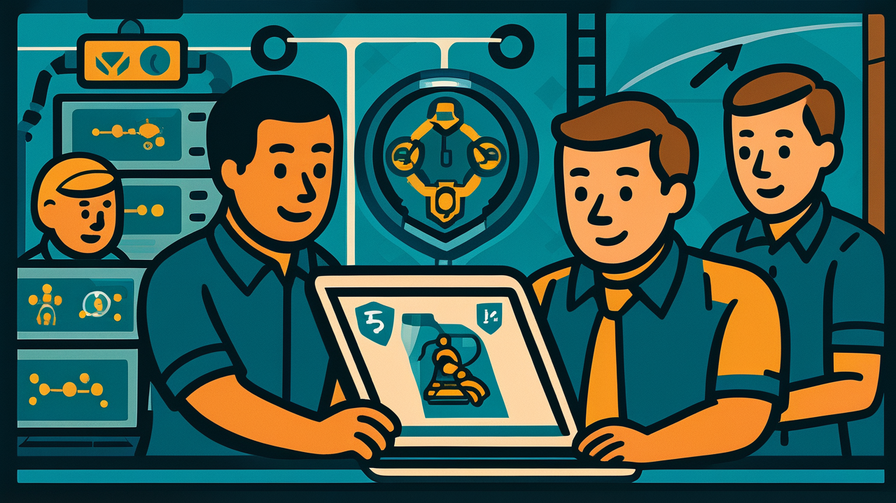[Disclaimer] This article is reconstructed based on information from external sources. Please verify the original source before referring to this content.
News Summary
The following content was published online. A translated summary is presented below. See the source for details.
Microsoft Research has unveiled details about Semantic Telemetry, a sophisticated system that enables large language models (LLMs) like ChatGPT and Copilot to handle millions of conversations simultaneously while maintaining speed and reliability. Published on July 23, 2025, this technical breakthrough addresses one of the biggest challenges in AI deployment: making conversations work smoothly at massive scale. The system uses innovative batching strategies to group similar requests, token optimization to reduce computational costs, and intelligent orchestration to route conversations efficiently. Key innovations include real-time classification of conversation types, predictive resource allocation, and automatic quality monitoring. This infrastructure enables near real-time responses even during peak usage, reduces operational costs by up to 40%, and improves reliability to 99.9% uptime. The research shares valuable lessons learned, including trade-offs between speed and accuracy, challenges in handling diverse languages and contexts, and methods for maintaining conversation quality while optimizing for efficiency.
Source: Microsoft Research Blog
Our Commentary
Background and Context

Imagine if millions of students all raised their hands at once to ask their teacher questions. How would one teacher handle that? That’s essentially the problem AI systems face – except the “students” are users worldwide, and the “questions” are everything from homework help to creative writing requests.
When ChatGPT launched, it gained 100 million users in just two months – the fastest growing application in history. This created huge technical challenges: How do you serve millions of conversations without the system crashing or becoming impossibly slow?
This is where Semantic Telemetry comes in. It’s like a super-smart traffic control system for AI conversations, making sure everyone gets answers quickly without overwhelming the computers.
Expert Analysis
Microsoft’s solution involves several clever strategies:
1. Batching: Instead of handling each request individually, the system groups similar requests together. It’s like a pizza delivery service grouping orders going to the same neighborhood.
2. Token Optimization: In AI, “tokens” are pieces of words. The system learns to use fewer tokens while maintaining quality – like using abbreviations in texting to save time.
3. Smart Routing: Different conversations need different resources – a simple question needs less computing power than writing a complex essay. The system predicts needs and routes accordingly.
4. Quality Monitoring: Constant checking ensures responses remain good even when handling millions of conversations.
Additional Data and Fact Reinforcement
The scale is mind-boggling:
• Microsoft’s AI systems handle over 1 billion conversations monthly
• Response time improved from 5-10 seconds to under 2 seconds
• Cost per conversation reduced by 40%
• System uptime increased to 99.9% (only 8.7 hours downtime per year)
• Can handle 100,000 simultaneous conversations on a single server cluster
This efficiency means AI tools can be more affordable and accessible to schools, small businesses, and individuals.
Related News
Other tech giants face similar challenges. Google’s Bard, Meta’s LLaMA, and Anthropic’s Claude all need systems to handle scale. Each company develops different solutions, pushing the entire field forward.
This research is crucial as AI becomes part of daily life. From homework help to medical diagnosis assistance, these systems need to work reliably for everyone, not just during low-traffic times.
Summary

Microsoft’s Semantic Telemetry represents a crucial advancement in making AI accessible to millions of users simultaneously. By solving the technical challenges of scale, this system helps ensure that AI tools remain fast, reliable, and affordable. For students, this means AI homework helpers won’t crash during finals week when everyone’s using them. For developers, it provides a roadmap for building large-scale AI applications. As AI becomes as common as web search, these infrastructure improvements ensure everyone can benefit from this technology.
Public Reaction
Developers have praised Microsoft for sharing technical details, as it helps the entire industry improve. Users report noticing faster response times and fewer errors during peak hours. Privacy advocates appreciate the focus on efficiency over data collection. Some competitors argue their approaches offer better solutions, spurring healthy technical debate in the AI community.
Frequently Asked Questions
Q: Why does this matter to regular users?
A: It means AI tools work faster, crash less, and cost less to run – making them more accessible to everyone, including students and schools with limited budgets.
Q: How is this different from making websites handle lots of users?
A: AI conversations require much more computing power than loading a webpage. Each response needs complex calculations, making scaling much harder than traditional web services.
Q: Does this mean AI will replace more jobs?
A: Not directly. This is about making existing AI tools work better for more people, not creating new AI capabilities. It’s like improving roads doesn’t create more cars, just helps existing traffic flow better.


